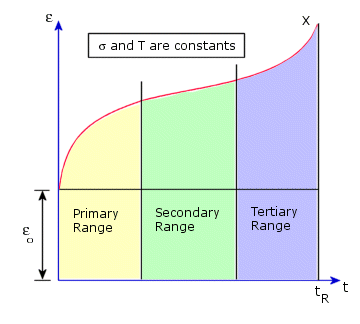Creep is a time dependent strain produced under a state of constant stress.
Creep is observed in most engineering materials especially metals at elevated temperatures, high polymer plastics, concrete, and solid propellant in rocket motors. Since creep effects take long time to develop, they are usually neglected in dynamic analysis.
The creep curve is a graph between strain versus time. Three different regimes can be distinguished in a creep curve; primary, secondary, and tertiary. Usually primary and secondary regimes are of interest.

Two creep laws based on an “Equation of State” approach are implemented. Each law defines an expression for the uniaxial creep strain in terms of the uniaxial stress and time.